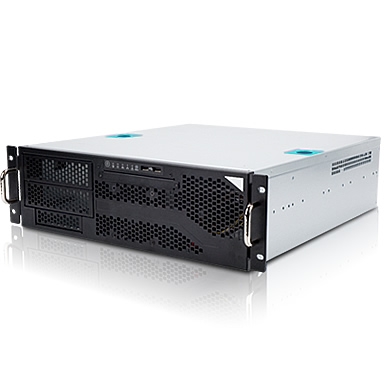5 Reasons IT Users Have Switched to Industrial PCs – Part II
In Part I of ‘5 Reasons IT Users have switched to Industrial PCs,’ I discussed Platform Standardization for Imaging, Delivery of Fully Assembled, Tested & Operational Units and Industrial Footprint for Longevity. Today, I will talk about Lead Time for Industrial PCs along with the Multiple Form Factors & Configurations available to you. I see these as the most important two remaining factors for considering a switch to utilizing Industrial PCs in your IT Department.
The Final 2 Major Reasons IT Users have switched to Industrial PCs:
- Lead Time: Most Industrial PCs can be assembled, tested and shipped within 1-2 weeks. This is very beneficial to a lot of users because it isn’t always easy to source certain components for in-house assembly, which is an IT staple. I have heard of lead times as long as 4-5 weeks for standard off-of-the-shelf components. By speaking with a knowledgeable Industrial Automation contact, you will be put into a configuration that has plenty of availability, enabling you to order systems as needed. There’s also an option for submission of rolling purchase orders with scheduled dock dates, enabling a product pipeline to be filled to meet those dates. The number one factor has always been lead time. Price is what it is but without product to work with, it’s tough to stick with just one solution.
- Multiple Form Factors & Configurations Available:

photo source: http://www.in-win.com.tw/Server/zh/goods.php?act=view&id=IW-R300
The benefit Industrial PCs provide can be seen in the myriad of form factors and configurations available. Where “white boxes have limited form-factor variability, Industrial PCs provide a diverse offering. For applications where space is limited, there are multiple categories of I/O-intensive Embedded PCs available, depending on the processing speed, memory, storage and I/O required. For applications with larger space, there are rack mount/wall mount/desktop motherboard and passive backplane/single board computer systems available. The most popular rack mount PC I have seen utilized is the 3U ATX Motherboard version. If an HMI is required for any of the above, you can always add a flat panel monitor with the size, interface, touch screen and resolution required. If an all-in-one HMI is a better solution for you, there are fanless Touch Panel Computers, Robust Panel PCs and expansive Industrial Panel PCs available. I find that the most important consideration in selection is cut-out dimensions, display size and orientation and Operating System support.
I hope that my first two discussions on why IT users should consider utilizing Industrial PCs has been beneficial. It has always been my intent to educate regarding current options available to you in Industrial Automation. Please stay tuned for my next blog where I will address some value added solutions available for IT users and test engineers. If you have any questions, please contact me at 800-830-9523, ext. 126 or via email at jeremy.miller@l-tron.com.
 Jeremy Miller is L-Tron’s Industrial Automation and Advantech Product Specialist. Jeremy is highly trained and brings over 10 years of experience in the industrial control, data acquisition and test & measurement markets. Jeremy holds Advantech certifications in: Industrial Platform, Industrial Operator Panel, Automation Controller & I/O, Industrial Communication, & Automation Software. Jeremy can be reached at 800-830-9523 ext 126; jeremy.miller@L-Tron.com
Jeremy Miller is L-Tron’s Industrial Automation and Advantech Product Specialist. Jeremy is highly trained and brings over 10 years of experience in the industrial control, data acquisition and test & measurement markets. Jeremy holds Advantech certifications in: Industrial Platform, Industrial Operator Panel, Automation Controller & I/O, Industrial Communication, & Automation Software. Jeremy can be reached at 800-830-9523 ext 126; jeremy.miller@L-Tron.com













